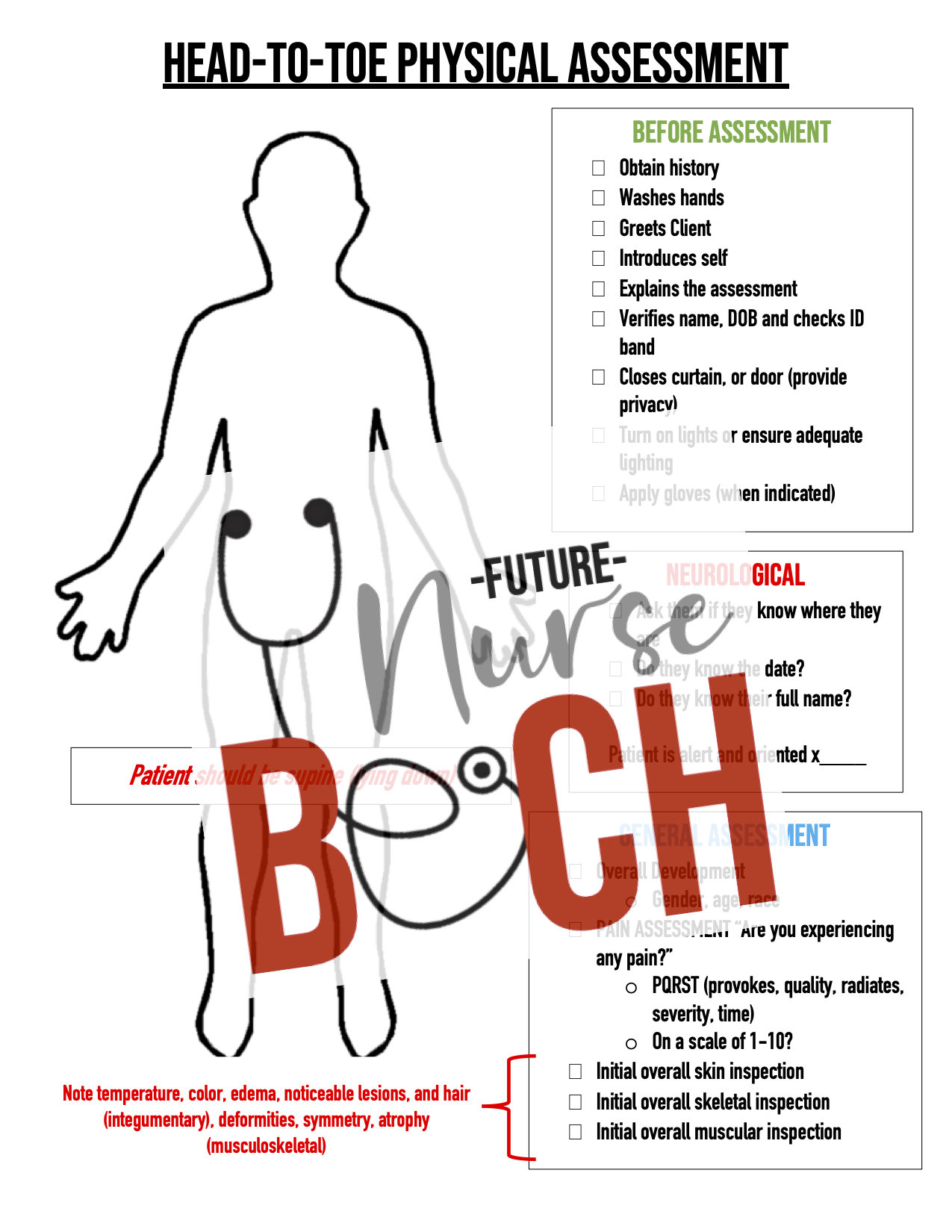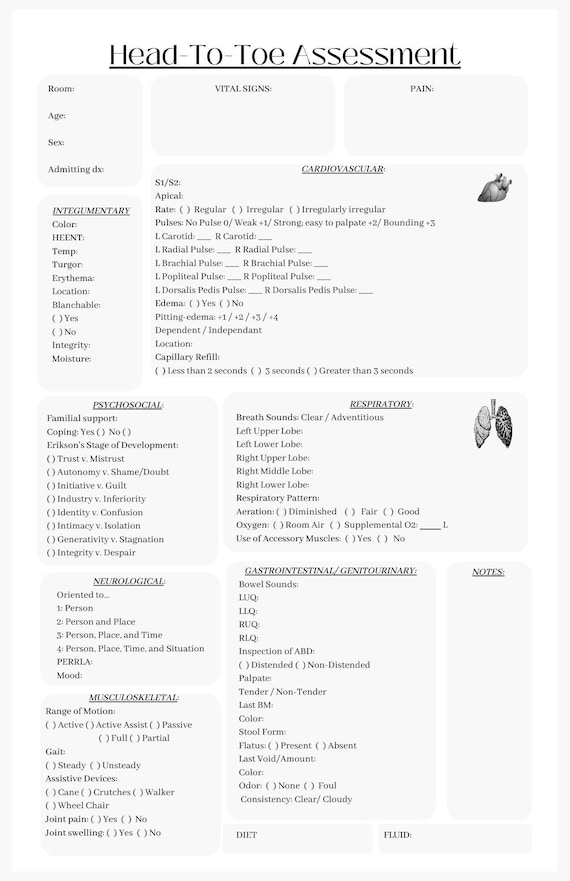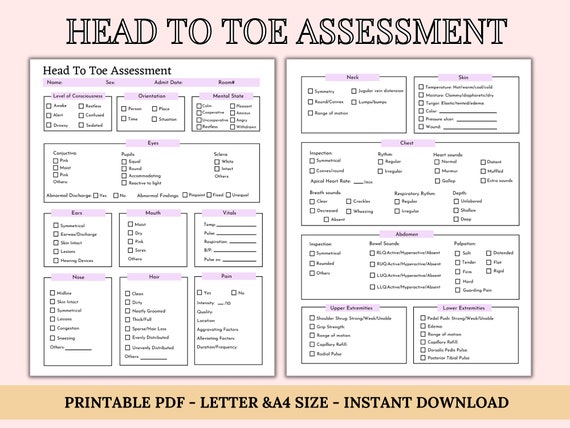

#Head to toe assessment checklist printable how to#
How to safeguard your printable head to toe assessment form when doing it online? Besides, each document executed with signNow has a digital Audit Trail that can validate a person's identity and “intent” to certify a document.Īll you need to do is to pick the printable head to toe assessment form pdf, complete the needed areas, add fillable fields (if necessary), and sign it without second guessing about whether or not your signed form is legally valid. Our platform keeps compliance with ESIGN and UETA, and eIDAS - global requirements that determine the legality of eSignatures. Pick the best solution to make sure that your documents are stored secure and stick to appropriate legal frameworks.Ĭheck out signNow, a cloud-based eSignature platform that allows you to complete and certify files legally and securely. However, taking into consideration the subtleties of digital paperwork, a variety of market-specific regulations and compliances are often unintentionally ignored or misinterpreted. Ask your child to help you open the drawer when you put away clothes or open the door when you go outside.How to safeguard your head to toe assessment checklist when executing electronically?Įxecuting any kind of paperwork, such as a head to toe assessment example digitally seems like a fairly straightforward process on the surface.Take turns building towers and knocking them down.

Encourage your child to play with blocks.Children learn by talking, playing, and interacting with others. Limit screen time (TV, tablets, phones, etc.) to no more than 1 hour a day of a children’s program with an adult present.After singing it a few times, see if your child sings some of the words when you touch a body part and wait. Sing songs, such as “Head, Shoulders, Knees, and Toes,” to teach names of body parts.Take her to the park, take walks, or go on a bus ride. Encourage your child’s curiosity and help her learn and explore new things.Name each piece when your child puts it in place. Help your child do simple puzzles with shapes, colors, or animals.Let your child play with sand toys or plastic containers, spoons, or a funnel in the tub or in a sandbox.For example, say “Look how well you’re eating with your spoon.” Use positive words and give more attention to behaviors you want to see (“wanted behaviors”), than to those you don’t want to see.Hang it on the wall or refrigerator so your child can see it. Give your child crayons or put some finger paint on paper and let her explore by spreading it around and making dots. Let your child create simple art projects with you.Say “Ready, set….”, then wait and say “Go” when you push the swing. Play with your child outside, by playing “ready, set, go.” For example, pull your child back in a swing.Let him help with simple chores, such as putting toys or laundry in a basket.


Give toys that teach your child how to make things work and how to solve problems.Give your child balls to kick, roll, and throw.


 0 kommentar(er)
0 kommentar(er)
